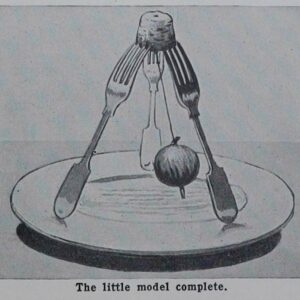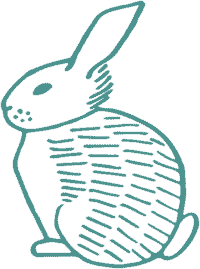We may receive a commission when you make a purchase from one of our links to sites such as eBay and others. As an Amazon Associate we earn from qualifying purchases. Thank you for support!
If you are looking for an interesting astronomy or physics project, here is a simple way to make your own Foucault Pendulum model that’s small enough to fit on your kitchen table. This would be a great project to do if you’re a teacher or homeschooling family!
I stumbled across this project in Volume 8 of my 1926 edition of the Grolier’s Book of Knowledge Children’s Encyclopedia, which entered the public domain this year.
We’ve adapted the original instructions a bit – you can find the easy-to-follow and printable how-to at the bottom of this page.
Here’s the original article from the encyclopedia:

Our experiment is made with simple household items you likely already have or can get fairly easily almost anywhere. We substituted styrofoam balls in place of the cork and apple in the original experiment, but of course, you could use those if you have them!
You could also adapt this experiment to use nearly any kind of material – K’Nex, wooden craft sticks, rubber balls, sand – whatever you have available will probably work just fine!
What is a Foucault Pendulum?
If you’re unfamiliar with the Foucault Pendulum, it was a large invention that debuted in 1851 by French physicist Léon Foucault to show the earth’s rotation. The famous unveiling of the pendulum took place at the Panthéon in Paris.

If it seems a little confusing on how this giant contraption might show you how the earth rotates, this video of Professor Jim LaBelle explains EVERYTHING.
Pretty cool, right? So let’s make one!
While the model of the pendulum that we’ll create here is not nearly as accurate as the real thing, it also doesn’t require a 50-foot high ceiling!
How the Model Pendulum Works

The model pendulum we’ll create in this activity is created so that when the bottom ball represents the earth on its axis. When the pendulum is set to swing, the tip of the skewer that is sticking out from the bottom will draw lines through piles of salt or salt.
As you rotate the plate, you will see that the swing of the pendulum does not change, but different lines and grooves are created in the sand, which demonstrates how the earth spins and rotates.
To best see the lines the pendulum creates in the salt or sand, you will want to use contrasting colors. So, you could choose to use a darker solid colored plate and salt or sand, or if using a white plate you could use colored sand.
The original experiment used an apple for the pendulum and cork, but we adapted this to use foam balls. Use whatever you have – it’s a very easy model to adapt using any materials you might have on hand.

How to Make Your Own Foucault Pendulum Model
Equipment
- 1 Pair of Scissors
Ingredients
- 3 Forks
- 2 small styrofoam balls
- 1 piece string or twine
- 1 T pin
- 1 solid color dinner plate
- 2 teaspoons table salt
Instructions
- Drive a wooden skewer through one of the styrofoam balls. Trim skewer so that about 3/4 of an inch of the skewer sticks out from each end.
- Tie one end of the piece of string around the skewer. You can optionally reinforce this with a piece of tape or hot glue.
- Poke a T pin through the foam or cork, with the head of the pin on the bottom of the foam or cork.
- Stick the prongs of three forks into your piece of foam or cork, spacing them evenly apart to form a tripod.
- Place the tripod on a large dinner plate.
- Tie the other end of the twine that is attached to the other foam ball around the head of the pin. You will want to make sure that the wooden skewer of the apple is nearly touching the plate but can still move freely. Trim your string as necessary.
- Gently tap or push the bottom foam ball to begin swinging like a pendulum. At the two opposite ends of the swing on the plate, make a pile of about 1 teaspoon of salt on each end. You will want the skewer that is sticking out of the foam ball to go through each pile of salt, so add more salt if necessary to achieve the right height.
- As the pendulum swings through the salt, you'll notice it starts to create little grooves in the salt. Now, slowly and gently turn the plate and you will see new grooves forming, but the direction of the pendulum does not change.
Notes
References + Further Reading
- The Foucault Pendulum, Wikipedia: https://en.wikipedia.org/wiki/Foucault_pendulum
- Physics and astronomy professor Jim LaBelle explains how the pendulum works. https://youtu.be/aMxLVDuf4VY

I hope you enjoy this activity and of course, if you do this with your kids or in the classroom, I’d love to hear how it goes and see your models that you make! Tell me about them or share a link to your project in the comments below!